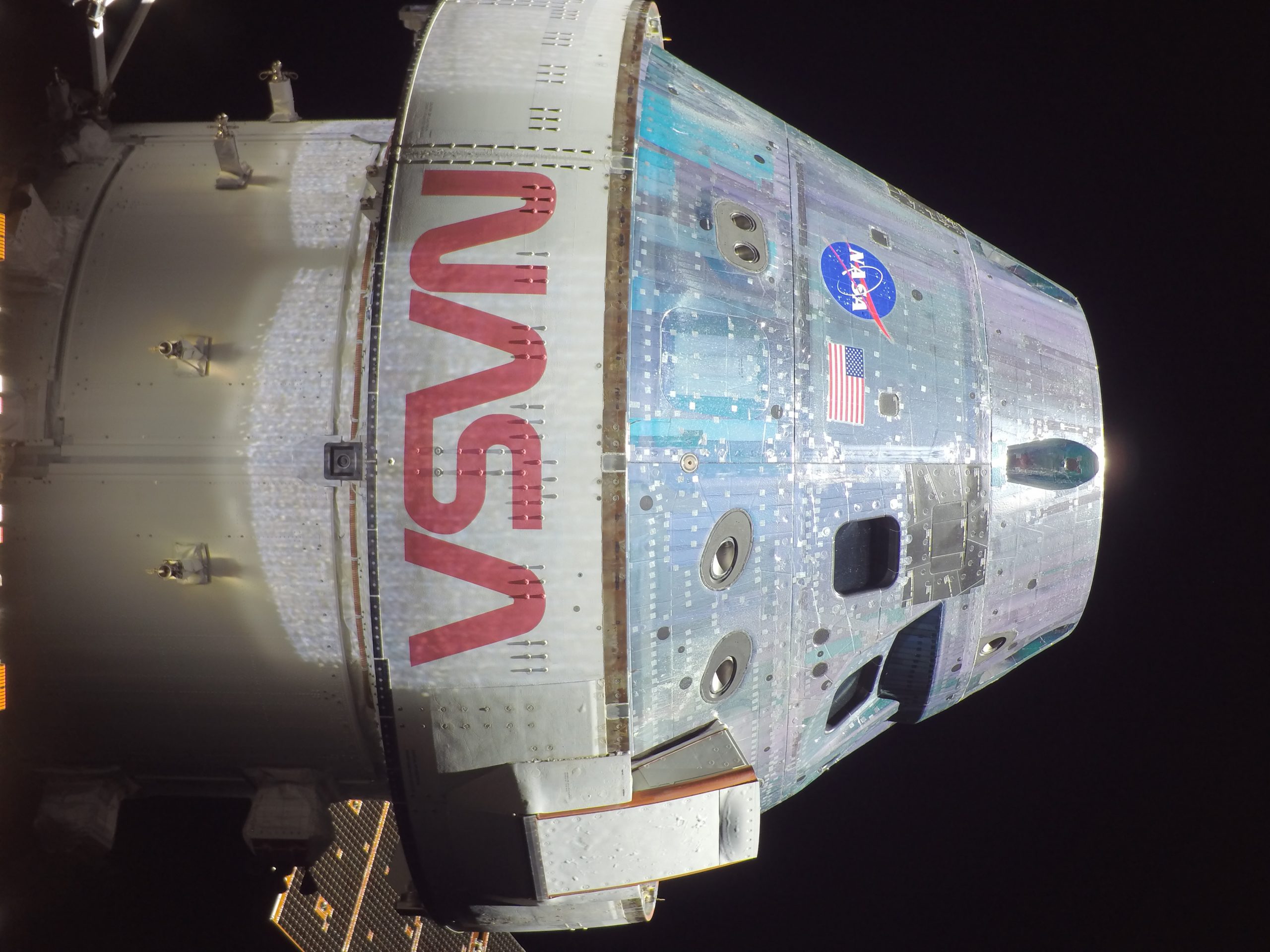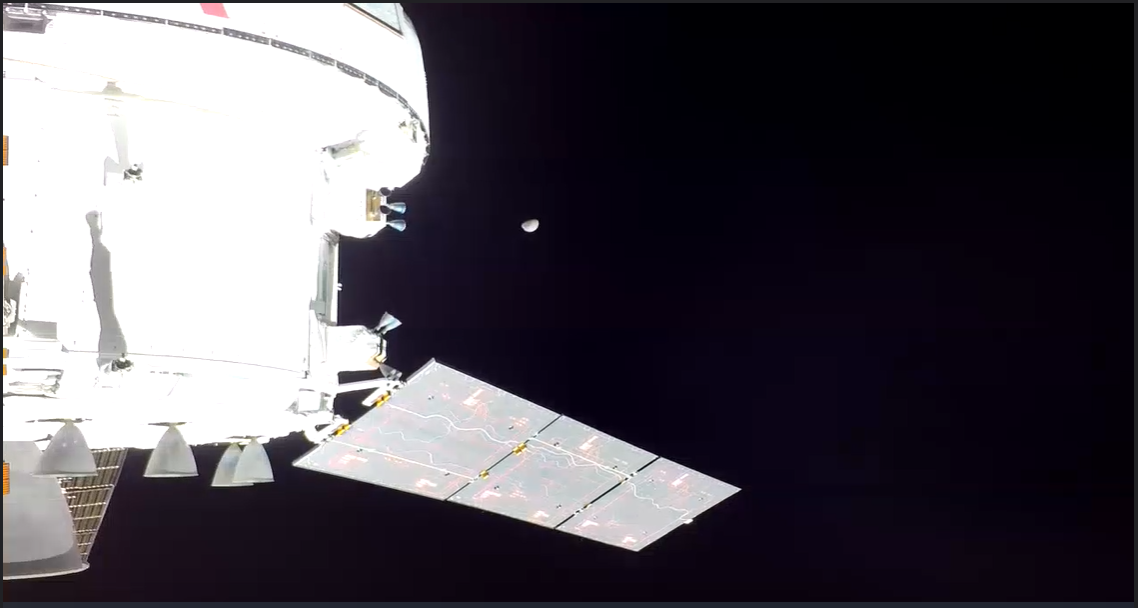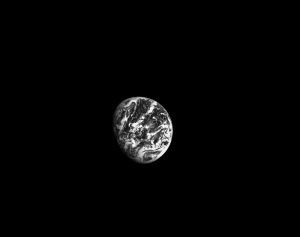The Orion spacecraft is now on its seventh day into the Artemis I mission, a flight test around the Moon, paving the way for astronauts to fly on future missions. At 12:02 a.m. CST, Orion completed the fifth outbound trajectory correction by firing the European service module’s auxiliary engines for 5.9 seconds, which changed Orion’s velocity by 3.2 feet per second.
The R-4D-11 auxiliary engines are a variant of the flight proven R-4D engine, which was originally developed for the Apollo program and was employed on every mission to the Moon. The engines are positioned at the bottom of the service module in four sets of two, and each provide about 100 pounds of thrust. In total, Orion’s highly capable service module has 33 engines of various sizes and serves as the powerhouse for the spacecraft, providing propulsion capabilities that enable Orion to go around the Moon and back on its exploration missions.
The team in the White Flight Control Room at NASA’s Johnson Space Center in Houston continued testing the spacecraft’s star trackers to determine their sensitivity to thermal variations as part of planned testing, and engineers used the optical navigation system to gather additional imagery of the Moon. The star trackers and optical navigation system are part of Orion’s advanced guidance, navigation, and control system, responsible for always knowing where the spacecraft is located in space, which way it’s pointed, and where it’s going. It even controls the propulsion system to keep the spacecraft on the correct path. The optical navigation can serve later in this mission and in future missions as a backup, ensuring a safe trip home should the spacecraft lose communications.
Download this video in high-resolution.
Overnight, flight controllers will conduct the search acquire and track (SAT) mode developmental test objective. SAT mode is an algorithm intended to recover and maintain communications with Earth after loss of Orion’s navigation state, extended loss of communications with Earth, or after a temporary power loss that causes Orion to reboot hardware. To test the algorithm, flight controllers will command the spacecraft to enter SAT mode, and after about 15 minutes, restore normal communications. Testing SAT mode will give engineers confidence it can be relied upon as the final option to fix a loss of communications when crew are aboard.
Orion will exit the lunar sphere of influence, or the gravitational pull of the Moon, at 10:31 p.m. CST and continue traveling toward distant retrograde orbit. The next live event will be NASA Television coverage of the distant retrograde orbit insertion burn, scheduled for 4:30 p.m. EST on Friday, Nov. 25. Shortly before entering the orbit, Orion will travel about 57,287 miles beyond the Moon at its farthest point from the lunar surface during the mission. View the Artemis I mission map to see Orion’s path in space.
On Saturday, Nov. 26, Orion will pass the record set by Apollo 13 for the farthest distance traveled by a spacecraft designed for humans at 248,655 miles from Earth, and the spacecraft will reach its maximum distance from Earth of 268,552 miles Monday, Nov. 28.
Just after 4 p.m. CST on Nov. 22, Orion was traveling over 208,000 miles from Earth and was over 36,000 miles from the Moon, cruising at over 3,000 miles per hour.
Listen to a replay of the Twitter Spaces NASA hosted Tuesday, Nov. 22, with NASA Flight Director Gerry Griffin, Jim Geffre from Orion, Nijoud Merancy with the Artemis program and Jennifer Ross-Nazzal with the NASA history office to discuss the milestone.
Learn more about Orion’s systems that were designed for deep space missions with astronauts.










